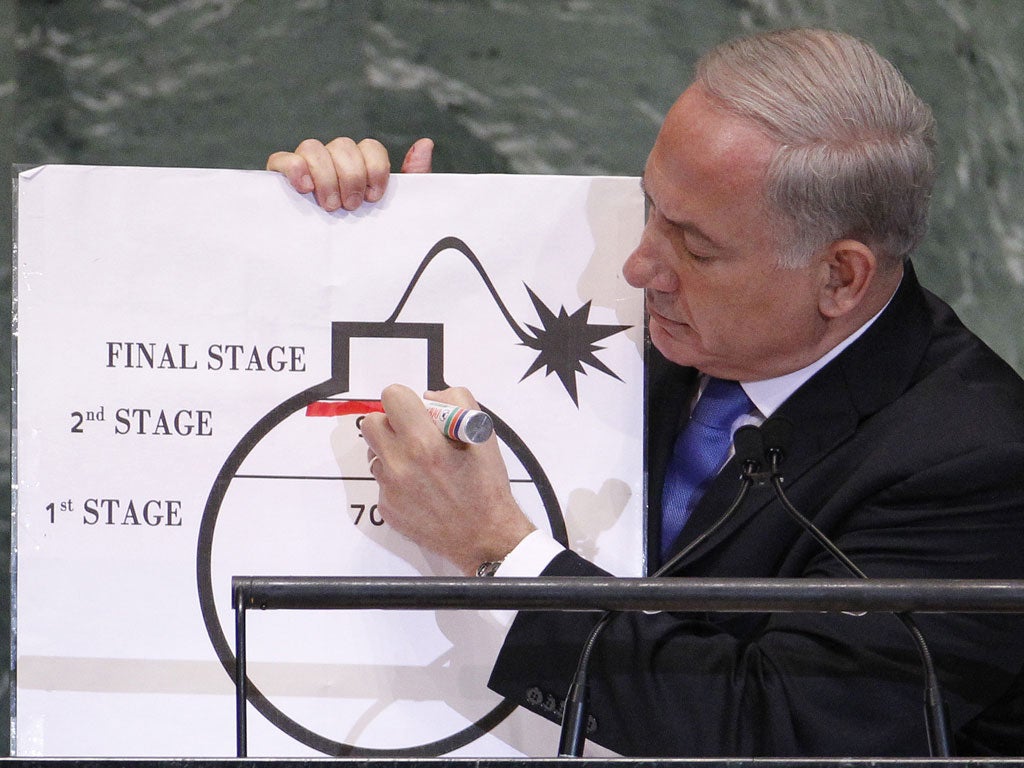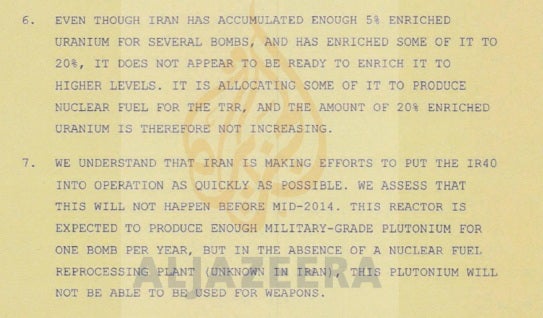Netanyahu's claims Iran was building nuclear bomb contradicted by leaked Mossad document
The Israeli prime minister says Iran's nuclear programme is a threat

Your support helps us to tell the story
From reproductive rights to climate change to Big Tech, The Independent is on the ground when the story is developing. Whether it's investigating the financials of Elon Musk's pro-Trump PAC or producing our latest documentary, 'The A Word', which shines a light on the American women fighting for reproductive rights, we know how important it is to parse out the facts from the messaging.
At such a critical moment in US history, we need reporters on the ground. Your donation allows us to keep sending journalists to speak to both sides of the story.
The Independent is trusted by Americans across the entire political spectrum. And unlike many other quality news outlets, we choose not to lock Americans out of our reporting and analysis with paywalls. We believe quality journalism should be available to everyone, paid for by those who can afford it.
Your support makes all the difference.Benjamin Netanyahu’s claim that Iran was in the final stages of producing a nuclear bomb was contradicted by his own secret service, leaked documents seem to reveal.
The document, one of hundreds of files obtained from many of the world's intelligence agencies and leaked to Al-Jazeera yesterday, reveals that uranium was not being used to make nuclear weapons, but was instead being used as fuel for the Tehran Research Reactor (TRR) to generate energy.
In 2012, brandishing a cartoon drawing of a bomb, the Israeli Prime Minister told the United Nations General Assembly in New York that Iran was about a year away from completing the bomb.
Standing on the stage with a diagram of a clip-art style bomb, he pointed at the section labelled “2nd stage 90%” to suggest that it would soon be finished and that Israel and its allies could operate with force if necessary.

However, a month later a leaked document passed on by his intelligence agency Mossad to a South African agency states Iran is “not performing the activity necessary to produce weapons” and “doesn’t appear to be ready to enrich it [uranium] to higher levels.”
A nuclear bomb requires uranium enrichment to 90%. The Mossad report states that Iran had 100 kilograms of uranium enriched to a level of 20%.

Netanyahu has since repeated his claims that Iran is planning to threaten Israel with the creation of nuclear explosives.
Reza Najafi, Iranian ambassador to the International Atomic Energy Agency, told a news conference last year that the nuclear programme is peaceful and that it was only to produce electricity for civilians.
Netanyahu is set to address the issue as a speech to the US conference on 3 March ahead of the Israeli election two weeks later.
The TRR was given to Iran by the US in 1967 and weapon-grade uranium fuel for the reactor, however the fuel supply was stopped after the 1979 revolution.
Subscribe to Independent Premium to bookmark this article
Want to bookmark your favourite articles and stories to read or reference later? Start your Independent Premium subscription today.
Join our commenting forum
Join thought-provoking conversations, follow other Independent readers and see their replies
Comments